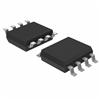MAX7032: Features: ` +2.1V to +3.6V or +4.5V to +5.5V Single-Supply Operation` Single Crystal Transceiver` User-Adjustable 300MHz to 450MHz Carrier Frequency` ASK/OOK and FSK Modulation` User-Adjustable FSK ...
floor Price/Ceiling Price
- Part Number:
- MAX7032
- Supply Ability:
- 5000
Price Break
- Qty
- 1~5000
- Unit Price
- Negotiable
- Processing time
- 15 Days
SeekIC Buyer Protection PLUS - newly updated for 2013!
- Escrow Protection.
- Guaranteed refunds.
- Secure payments.
- Learn more >>
Month Sales
268 Transactions
Payment Methods
All payment methods are secure and covered by SeekIC Buyer Protection PLUS.

 MAX7032 Data Sheet
MAX7032 Data Sheet






